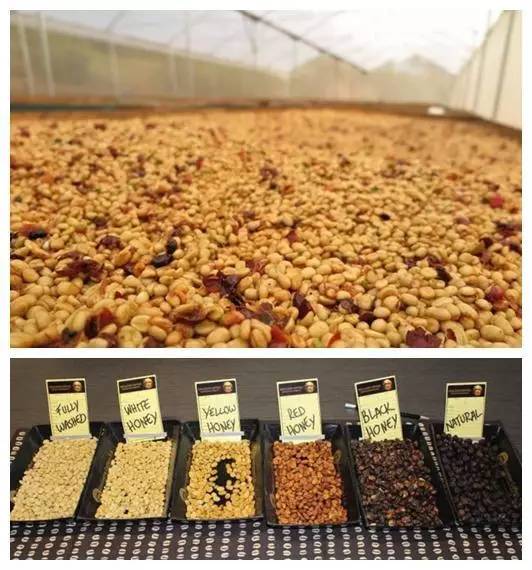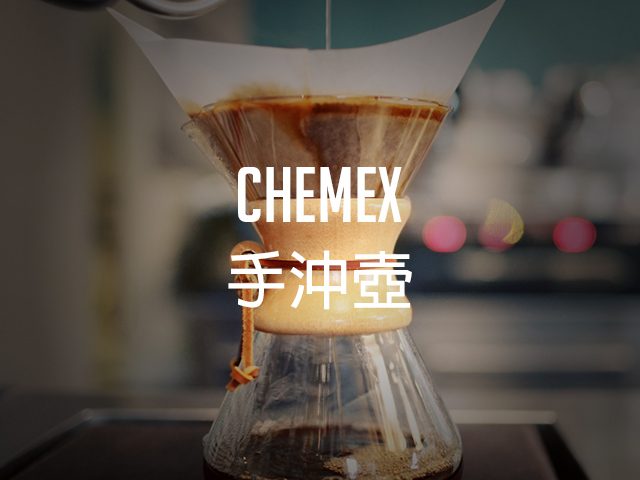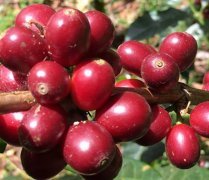Advantages and disadvantages of coffee bean treatment: sun water washing, half water washing, half sun honey treatment.

For professional baristas, please follow the coffee workshop (Wechat official account cafe_style)
The harvest time of coffee fruit is different, about 7 to 8 months the coffee fruit ripens bright red, which is called "coffee cherry" (coffee cherries).
The structure of coffee cherry is: exocarp, pulp, pectin layer, sheep skin (seed shell), silver skin, fruit, pectin layer thickness is about 1-2mm, it is difficult to remove translucent substance, raw bean is the innermost fruit, the outer layer contains some residual silver skin.
Based on cost and economic considerations, but also due to different climatic and environmental conditions, the process of extracting beans by treatment is different, but the process does affect the results!
Common methods of treatment:
* Water washing treatment (Wet/Washed Process)
* semi-washing treatment (Semi-washed)
* Solar treatment (Dry/Natural/Unwashed Process)
* Honey treatment (Honey Process/Miel Process)
* Water washing (Wet process/Washed method):
In view of the disadvantages of the traditional solarization method, it is followed by the water washing method. Harvest the berries with a peeling machine to separate most of the pulp from the coffee beans, then guide the shelled beans to a clean sink, soak in water and ferment to completely remove the residual pulp layer. In the past, washing was often the first choice for good coffee bean treatment. Through water treatment, unripe beans and defective beans are selected because of buoyancy, and the fermentation process is better controlled, so the flavor is not as mixed as sun beans. It shows obvious acidity, complexity and cleanliness (without any negative flavor, such as astringency or sharpness). But it is also because it is too "clean" and the richness of the flavor is a little weaker.
Characteristics of washing method
1. The color of raw bean is bluish green and its appearance is complete.
two。 The flavor is bright and clean, the acid taste is strong, the consistency is weak, and the impurities are less.
Shortcomings of washing method
To obtain 200g raw beans, it takes 1 kilogram of fruit to wash and consumes about 2-10 liters of clean water, so the cost is high.
* semi-washing (Semi washed method):
The flavor of semi-washed coffee is between the sun-washing method and the water-washing method, which is popular in Indonesia. Mantenin uses the semi-washing method, and Brazil has also begun to use the semi-washing method in recent years. The semi-washing method is similar to the water washing method, first removing the outer skin and part of the pulp of the coffee cherry berries, then drying the berries, making the berries dry and then moistening them, and then using a special machine to grind off the pulp and remove the seeds.
An improved treatment method for reducing water consumption of traditional washing method
1. Screening of floating beans (same washing method)
two。 Remove pulp (same water washing method)
3. Machine to remove pectin. Washing method is to remove pectin by fermentation, and the improved method is to remove pectin by pectin scraper.
4. Sun-dried or mechanically dried to 12% moisture content < semi-washed flavor between sun-dried beans and water-washed beans, no water-washed beans sour sun-dried beans sweet >
* Dry process/Natural method:
Tanning is the oldest and most primitive and convenient way to deal with coffee, which was used by Arabs more than a thousand years ago.
1. Sift out floating beans
Pour the harvested coffee fruit into a big trough, the ripe and full fruit will sink to the bottom of the water, or the overripe fruit will surface, and these floating beans need to be removed.
two。 Sun drying
Next, the whole coffee fruit with meat and belt is put on the bean drying farm to dry in the sun, and it takes about two to four weeks to naturally dry to about 12% water content, depending on the climate of the producing area.
3 shelling
The dried fruit will be naturally dried and the hard peel, pulp and sheepskin will be removed by a shelling machine, and the raw bean will appear.
The advantages of solarization
1. The direct reception of sunlight exposure is simple and the treatment cost is low.
two。 Raw beans naturally dry in the pulp to add blueberry, strawberry and tropical fruit flavor, rich and sweet fruit aroma, soft sour taste and uniform bitter taste, with better consistency and thickness.
Shortcomings of solarization method
1. In some producing areas, the sun treatment did not screen out the floating beans, resulting in defects in the quality.
two。 During the drying process, the pulp is easy to mildew due to the return of moisture, which pollutes the raw beans.
3. The shelling of the machine inevitably hurts the raw beans, resulting in appearance defects.
However, drying is becoming popular today, and it is even one of the important treatments for competition-grade coffee beans. From the use of improved African viaducts, this viaduct design not only avoids moisture, dust and animal droppings on the ground, but also makes berries have more air convection, drying is more uniform than fruits, and farmers constantly turn the berries carefully and regularly, so that the bean flavor of the sun-tanning method can be brewed through the pulp, and the flavor is getting better and better.
* Honey treatment:
The scientific name "pulp natural" should be the same as the traditional wet treatment method. After removing the thick peel of the coffee cherry, it retains the lower sticky pulp layer (mucilage). Instead of fermenting to remove the sticky pulp layer, it allows it to dry directly with this layer, and then directly removes the sticky layer and shell (parchment).
The honey treatment of difficulties:
1. In the process of drying, because the sticky pulp layer is on the coffee beans, it must be turned frequently in the first few days to prevent the coffee beans from sticking together, so the manual part is much more than the normal washing method.
two。 If it is not dried as soon as possible, it will easily over-ferment.
3. If it is not turned enough, or the overall environment is too wet and too cold, or the sticky pulp layer is too thick, the coffee beans are prone to mildew, so some coffee farms will use machines to control the thickness of the sticky pulp layer left behind, so that the coffee beans can be dried more quickly. the consistency of the overall taste is also good.
4. Compared with wet treatment, it requires more space and takes longer days to dry.
* enhancement method:
1. During the first 2-3 days of the sun, it is best to finish under round-the-clock monitoring, during which part of the pulp layer has been dried, while the coffee will not have a good fermented taste.
two。 In the process of drying, a high scaffolding can be used to make the whole process more ventilated and less prone to mildew.
3. If you dry on the patio or terrace, the mucus in the pulp layer will seep into the patio, so you need to clean up a batch of coffee beans before drying them.
* Taste features:
1. The advantage of honey treatment is to enhance the body and sweetness (honey process or miel process) of coffee and relatively reduce its acidity and delicate aroma, which is the taste after the honey treatment has been perfectly implemented.
two。 When it is not handled well, it will taste bad acetic acid, like the pungent smell of onion or garlic, even if it is carried out quite well, it will still have some muddy smell, the rest of the rhyme is not clean, and the miscellaneous smell is heavier than the general washing method. therefore, on the whole, the risk of honey treatment is much higher than that of general wet treatment.
3. Honey treatment plants are cheaper to build than other methods, so it is a boon for small cooperatives. However, the process is complex and laborious. Without proper control of the whole batch of beans, there will be an overripe smell of fermentation rot, but well-cooked coffee beans will have an obvious sense of sweetness. Faramy Manor, Shuma Manor and Tang Mayo all belong to this type of coffee beans.
Important Notice :
前街咖啡 FrontStreet Coffee has moved to new addredd:
FrontStreet Coffee Address: 315,Donghua East Road,GuangZhou
Tel:020 38364473
- Prev

Perfect combination of rationality and madness-- demonstration course of Chemex hand Pot (with video)
Background knowledge of Chemex hand flask: in 1941, the German inventor Peter Schlumbohm designed the Chemex hand flask. To this day, its exquisite design still keeps the glass funnel in the upper part and the tapered flask in the lower half connected by a detachable wooden handle and fastened with an exquisite leather rope. This unique design was once praised as "the perfect combination of reason and madness."
- Next

What is the Origin and main producing areas of the Red Cherry Project OCR (Operation Cherry Red)
Professional baristas Please follow the Coffee Workshop (official Wechat account cafe_style) Red Cherry Project OCR (Operation Cherry Red) is an EU project proposed by the Dutch government to encourage coffee farmers in Ethiopia to produce better quality coffee beans. Origin: led by Dutch Trabocca BV (the largest Dutch soybean vendor), partially praised by the Dutch government
Related
- What is the meaning of lactic acid fermentation with coffee bean treatment?
- How to judge the state of foam by sound?
- How does the latte pull out the unicorn pattern? Come to get for a little trick to improve the flower pull!
- Will flower pulling affect the taste of the latte?
- Do you know the history of coffee?
- The difference between honey treatment and sun washing what is raisin honey treatment?
- What kind of milk can a novice use to make coffee foam to keep the foam longer? The correct method and skills of milking tutorial sharing
- Why do washed coffee beans taste sour? Flavor characteristics of washed Coffee
- Introduction to the skill of how to practice the size and height of water injection around the circle of hand-brewed coffee
- How do beginners practice coffee flower drawing from scratch?

